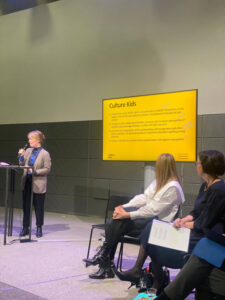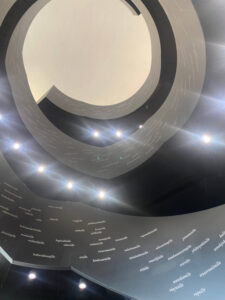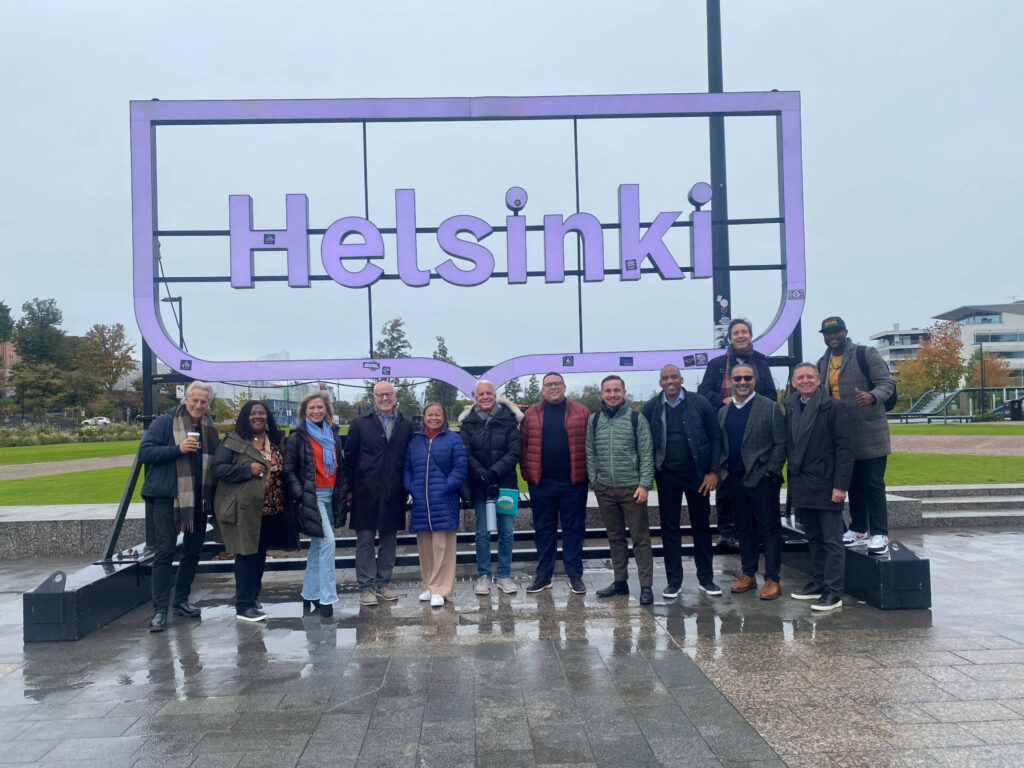I’ve spent my entire adult life working on issues of economic disparity. Guided by a passion for social justice coupled with an affinity for law, I began my career as a Legal Aid lawyer representing very low-income families on issues spanning from racial discrimination and housing evictions to the right to education and health care. I later moved from law into banking, cutting my teeth on community reinvestment and fair lending. While my career has since transitioned to corporate philanthropy, my focus has remained on shepherding resources and opportunities across low-income and marginalized communities.

I was influenced by great teachers and received guidance from role models who shaped my belief in social justice – that everyone deserves equal economic, political, and social rights and opportunities – as a frame for my career. Perhaps the most important takeaway from these mentors was the unequivocal truth that not everyone starts at the same place, nor with the same advantages. So, as a society that professes to believe in equal opportunities, we must ensure that everyone is prepared for them. While we cannot guarantee outcomes, we should provide assistance and support at key life milestones to create equal opportunities.
But, as I reflect on my career with the privilege of hindsight, I now realize that the programs I created and the funding that I directed were purely from an economic perspective. My belief was that success equated to families moving out of poverty, having a living wage, stable housing, decent schools, and access to health care. I didn’t see a role for philanthropy beyond creating that infrastructure and societal support– a now glaring blind spot.
In 2023, I was invited to attend The Gambrell Foundation’s visit to Finland and Denmark. The goal of the trip was to discern why – and how – these were the two happiest countries in the world. I was asked to attend to expand my thinking around how we should approach economic mobility, and specifically whether the ultimate goal for families and societies should go beyond economic sustainability, but also include the ability to live lives of happiness and awe. I was open but somewhat skeptical. After all, happiness is subjective. If philanthropy could at least play a small part in helping to right the ship of opportunity, shouldn’t we leave it up to individuals to determine their particular route?

An honest assessment of those countries must acknowledge that they are happier (they would say “content”) because their governments step in at four of the most stressful and potentially frightening times in the lives of families: The Finnish and Danish governments pay for parental leave, daycare, college education and elderly care –and of course healthcare insurance. (The United States is alone among all industrialized countries in not offering healthcare insurance to its citizens). If we could subtract those four overarching worries, which cast a significant pall over the lives of most Americans, we would undoubtedly extract a lot of anxiety out of the system. But we can’t simply attribute the happiness factor to just that, nor shrug off that in “socialist countries” the welfare state provides a strong safety net that allows more room for happiness.
Still, those issues aside, we did find one Finnish practice in particular that we believe could be replicated in the United States with positive impact. “Culture Kids” is a program that was started in Finland in 2020. The program invites all newborn babies in Helsinki to be matched with an arts and culture institution in their community, and they are paired for the first seven years of the child’s life. Importantly, the child and family are introduced to this option by the city’s maternity and child health clinics at the birth, intentionally connecting health care and the arts – a strong statement on the arts’ effect on individual health, development and well-being. The City of Helsinki, along with culture and art organizations, have jointly formulated a set of core values that steer the work. The core values are “child-orientedness,” cooperation, professionalism, equality, accessibility, experimentation, and cultural awareness. The program is continuously refreshed in close cooperation between the different parties based on feedback from the families.
One key differentiator is that all families–no matter the income level– are eligible. I was particularly taken by the broad approach, which is very different from our domestic programmatic approach. In place of a need-blind approach, in the United States we instead apply a financial gap analysis. That is, identifying who cannot afford certain services and, within that, who can survive the gauntlet of applications, scrutiny, and shame to emerge eligible for housing, food, health care, or other basic needs. The inclusion of all children communicates that the arts are for everyone, and there is importance in experiencing them as a community
In Finland, while all newborns are invited, about 40% of families ultimately sign up for Culture Kids, and each year, a different sector of the arts is assigned to the year’s newborns (theater, symphony, ballet, etc.) and that sector remains with the children of that year until they begin school. Helsinki arts organizations invite participating children, together with a family member, to at least two free-of-charge classes, events, performances, or workshops annually until age seven. Perhaps this insight from the cultural director of the renowned Musiikkitalo, the symphony hall in Helsinki, summed it up best when he told us the arts “help face and change the future” and are a key force in the development of the city. I was particularly taken by the community-building goal and the participation of kids and families from all walks of life and it was clear that beyond the enjoyment and learning that comes from the arts, Helsinki views this as a way to connect families to city services, build a pathway to hobbies and inspire future patrons of the arts—all of which contribute to diverse and thriving communities.
Upon our return, The Gambrell Foundation introduced us to Susan Magsamen and her New York Times bestseller, Your Brain on Art, which has only underscored my belief that the Finns are getting it right in more ways than one. It’s a fascinating analysis of neuro arts, or the impact that the arts have on our physical bodies. It addresses ways that art positively boosts learning, mental health, and life expectancy, and reduces dementia. One inescapable conclusion is that it’s not either arts or math/science/reading—the arts enhance all aspects of learning and health, and we need both. Just a few of Magsamen’s findings that support programs like Culture Kids:
As I look back on my career, I must acknowledge that I would have had more impact on community investment initiatives if I had envisioned success as more than economic mobility. While we’ve come a long way in how we look at holistic community development, we haven’t been intentional about looking beyond financial parameters to happiness and awe. The data now exists that supports the arts as drivers of learning, healing, and happiness. In Charlotte, we can start with Culture Kids, but we should commit to intentionally including the arts throughout our community.
Our world is cruelly separating us all, seeking to amplify our differentiators rather than our commonalities. But Finland remains an outlier – and an outlier we can learn from – where all citizens are viewed as part of a “common spirit” and every child is born with the same opportunity to succeed. At a time when our community is experiencing record levels of anxiety, depression, and loneliness, a program that positively impacts physical health, brings together unlike groups, builds a pathway to hobbies and social capital, and creates future art patrons is an idea whose time has come. I encourage you to join the effort to make Culture Kids a reality in Charlotte. Stay tuned for more details later this year!
